9 Great Tips for Capturing Dramatic Images of the Sea
If you’re anything like most people, trips to the seaside are filled with anticipation and excitement – and usually, lots of random photographs. Many of us head to the beach with plans to capture exciting and dramatic images, yet all too often, our photos tend to fall short.
Still, there’s a reason that the ocean is one of the most exciting settings for landscape photographers. Unlike static landscape scenes, the ocean is constantly moving, presenting a number of exciting opportunities for dramatic photos.
The secret is knowing how to capture the sea – in all of its beauty. If you’re looking forward to a trip to the seaside, or if you live near a beach yourself, there’s a lot that you can do to prepare yourself to capture some great photos. Let’s take a look at a few tips that can help you to create unique and powerful images of the sea.
1. Know When to Go
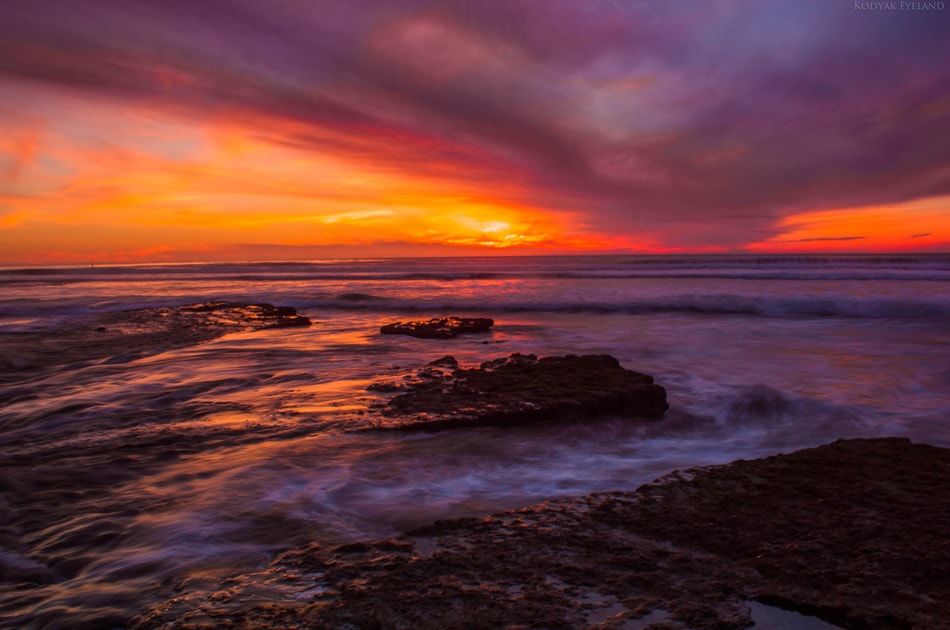
Photo by Kodyak Tisch
One key aspect of ocean photography is knowing when to go. While bright, sunny days may seem like the best time, the fact is that there are many times of day that are ideal for capturing dramatic images. For instance, on a clear day, early morning and evening – commonly known as golden hour, is one of the best times for ocean photography; the golden light found during this time casts a beautiful glow that can make for some beautiful and dramatic images.
At sunset and sunrise, the dramatic lighting just after a storm, or the mist and fog found during the early morning hours are also ideal for ocean images. It’s worth checking the weather forecast ahead of time, so that you can be prepared for the best lighting and weather conditions that will help you to capture the type of images that you’re after.
2. Bring Enough Gear
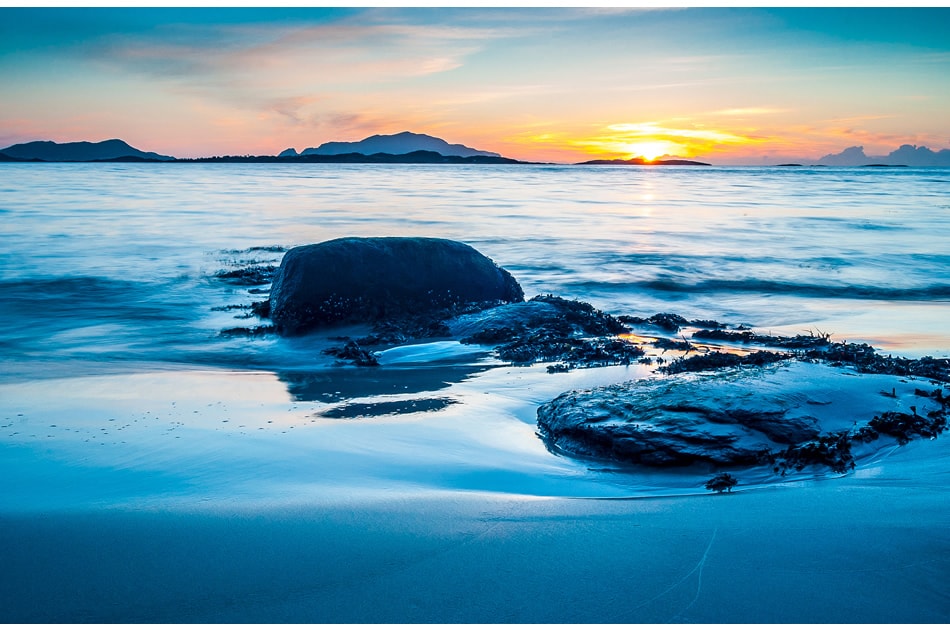
Photo by Knut Petter Dimmen
Part of being able to capture amazing images, starts by being prepared with the right gear. While you won’t need much to get you started, it’s especially important to have some UV filters, if you’re planning to photograph on the beach, to help protect your lenses from the elements. Another great tool is a neutral density (ND) filter, or, better yet, a few different strengths of neutral density filters. These are especially helpful for situations where the foreground and sky require different exposures.
You’ll also want to bring a polarizer, if you have one, to help cut down on glare, and to darken the blues in the sky and water. Also, consider bringing a tripod, for low light conditions or times when you’ll need a longer exposure. Finally, depending on the type of photography that you’ll be doing, you may want to bring along an assortment of lenses, especially a wide angle, and telephoto lens.
3. Use the Right Shutter Speed
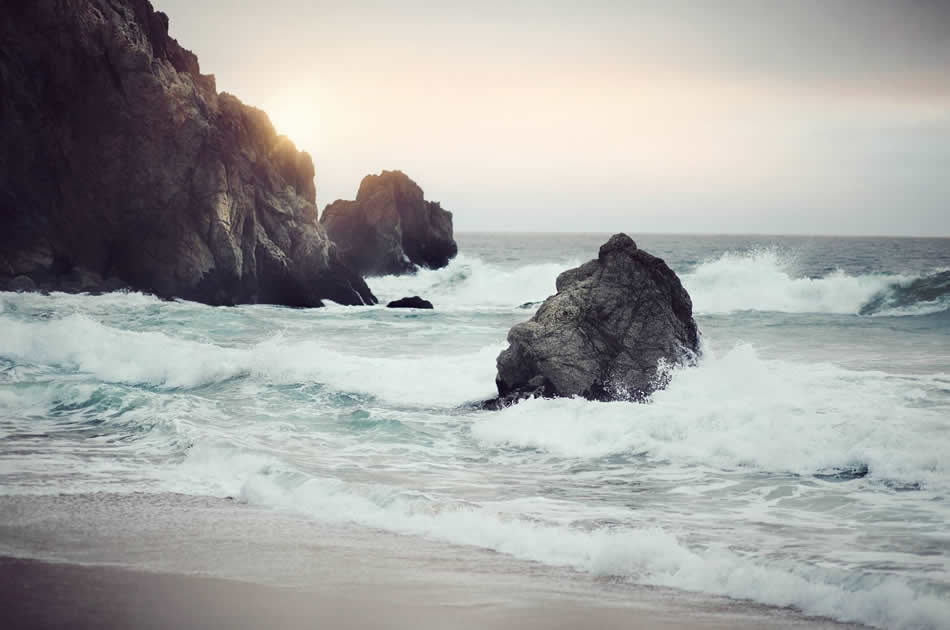
Photo by Scott Schwartz
One of the best ways to capture the drama of the sea is learning how to control the motion of the waves. You can do this by using different shutter speeds for different outcomes. While a slow shutter speed will allow you to blur the motion of the waves and create soft, dreamlike images of the sea, a fast shutter speed enables you to freeze action and capture a split second in time.
4. A Slow Shutter Speed
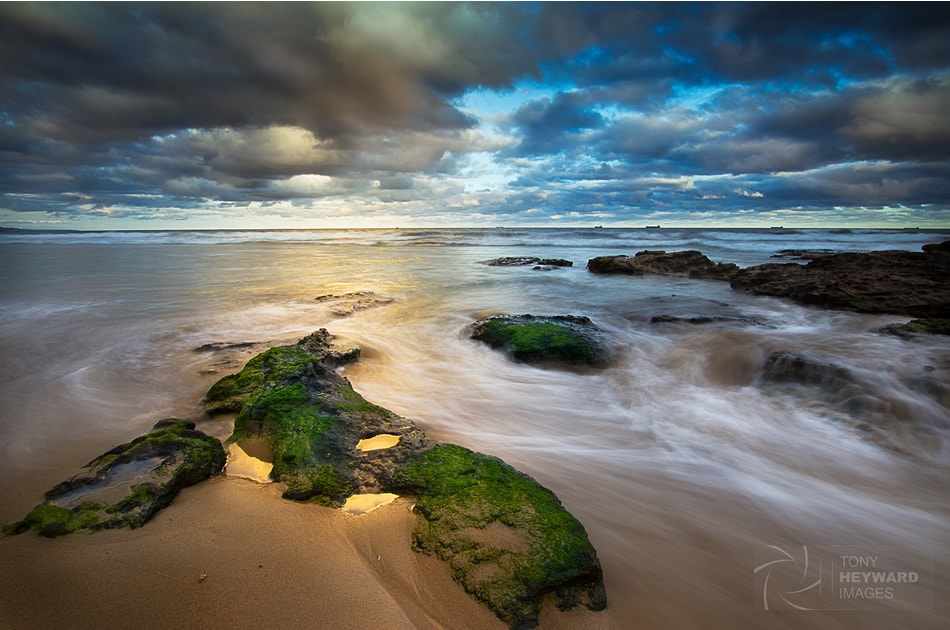
Photo by Tony Heyward
Using a slow shutter speed is ideal for when you want to capture images with a soft, blurred quality. Using long exposures, and a tripod, allows you to blur the motion of the waves, and renders the clouds as soft streaks as well.
You can get away with using slow shutter speeds when the light is dim, or you can use a neutral density filter to help block out some of the light during the day.
Try experimenting with different shutter speeds for different outcomes, the slower the shutter speed, the more blurred the motion will be, and you may need to use shutter speeds of 30 seconds, or more, to achieve the effects that you’re after. Also, keep in mind that the farther away from the ocean you are, the slower your shutter speed will need to be.
5. A Fast Shutter Speed
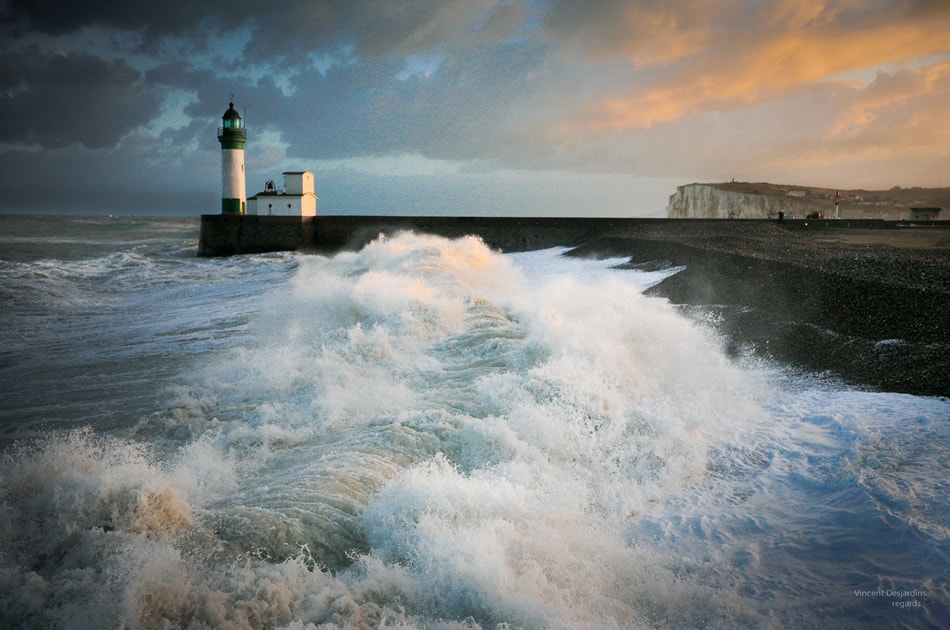
Photo by (vincent desjardins)
Fast shutter speeds are especially effective on days where the ocean is wild and dramatic, and you’re hoping to capture some of the power of the waves. In these situations, you can use a fast shutter speed, something like 1/500 of a second or faster to capture a dramatic image of the sea or freeze the action of a wave as it crashes on the shore.
6. Look to Capture Reflections
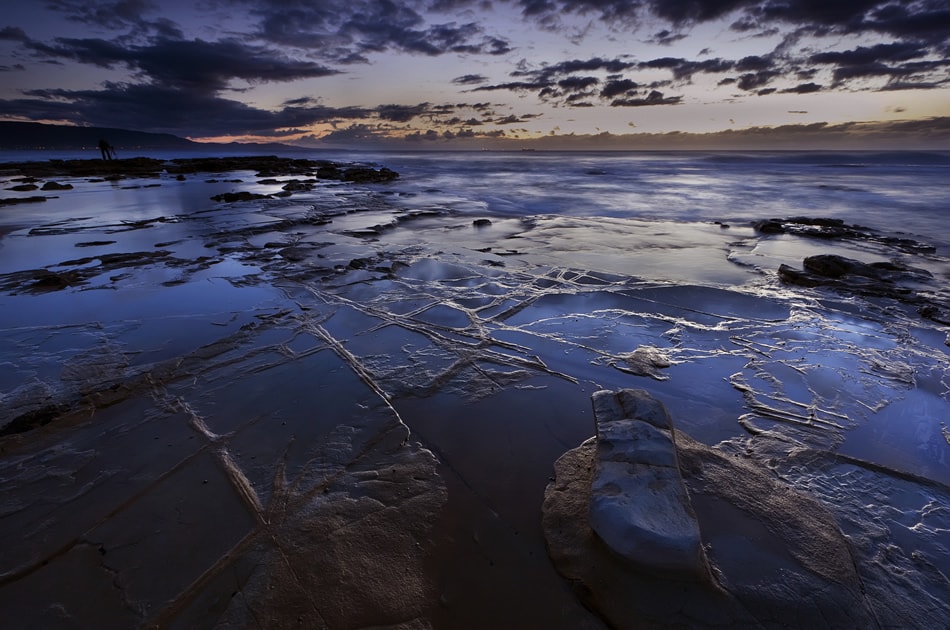
Photo by Gemma Stiles
While capturing the sea during a storm is a great chance to capture dramatic images, calm days offer a great opportunity for capturing drama as well. One great thing about calm days is the chance to capture reflections. You can find these in the sea, or in the tidal pools along the water’s edge. Look for areas that feature interesting colors or shapes, such as a colorful sky, or interesting rock formations, and don’t be afraid to change your position to adjust the reflection. If you’re using a polarizer, remember to take it off, since these filters eliminate glare, and cut through reflections.
7. Look for Details

Photo by Vinoth Chandar
While seascape images are all about wide, sweeping landscapes and sheer infinite beauty of the sea, the coast offers some great opportunities to capture beautiful smaller details as well. Shells, interesting rocks, birds, tiny creatures in the tidal pools, seaweed, and more can all present great opportunities for close-up, or even macro images.
8. Choose Your Focal Point
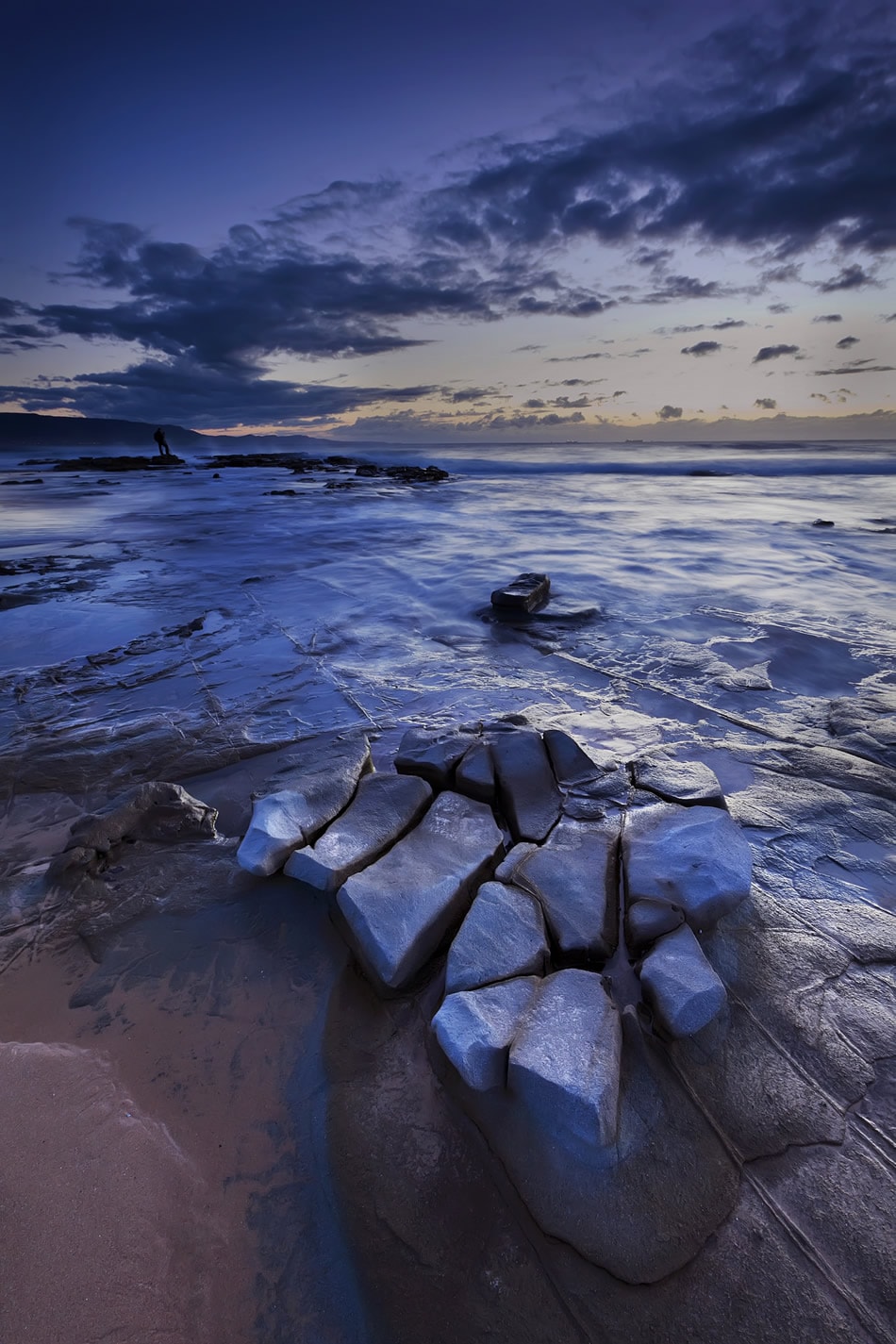
Photo by Gemma Stiles
Images of the sea that have a solid, clear focal point tend to be much more engaging, and dramatic than ones that simply feature a sky and horizon without much else going on. Look for opportunities to include strong focal points in your images, either by including exciting foreground with a wide angle lens, or looking for a lighthouse, a flock of birds, a ship, the setting sun, or other distant details to use as focal points as well.
9. Consider Black and White
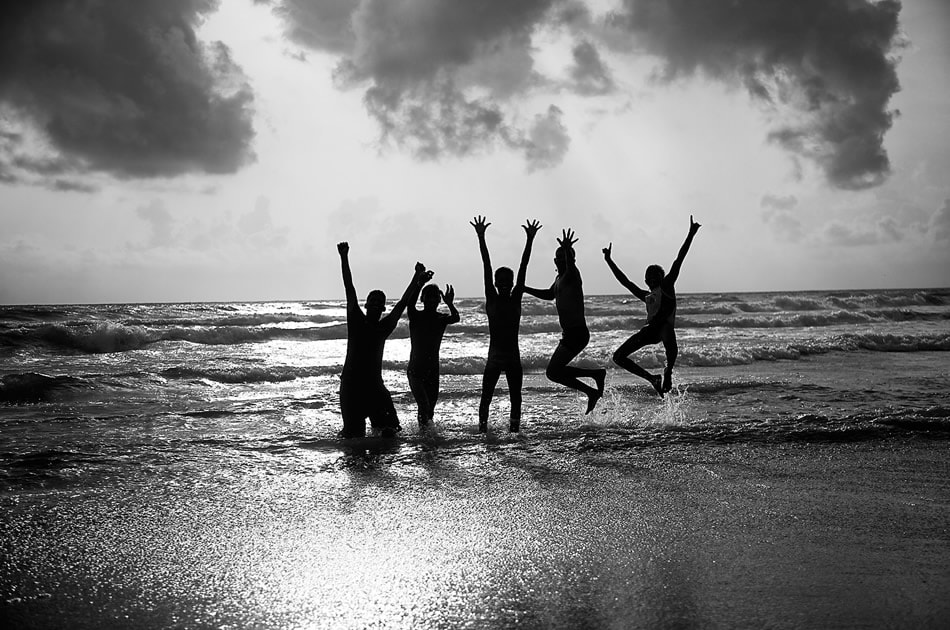
Photo by Vinoth Chandar
Nothing says drama quite like a good black and white image. While you may assume that a full-color image is always the best option, in many cases the details found in dramatic images tend to be amplified in black and white.
Finally, one of the most important secrets for capturing amazing, dramatic images is patience. Don’t rush your images, or feel compelled to start snapping as soon as your feet hit the sand. Instead, take the time to scope out the area, and look for elements that really capture your attention, taking the time to create well-thought-out, artistic shots. Often, changing your vantage point, walking a bit farther, or getting a bit closer can reveal an even better photo opportunity. Don’t rush things, and take your time to get it right, the results will speak for themselves.
Do you enjoy ocean photography? Share your thoughts with us on Twitter or Facebook!
